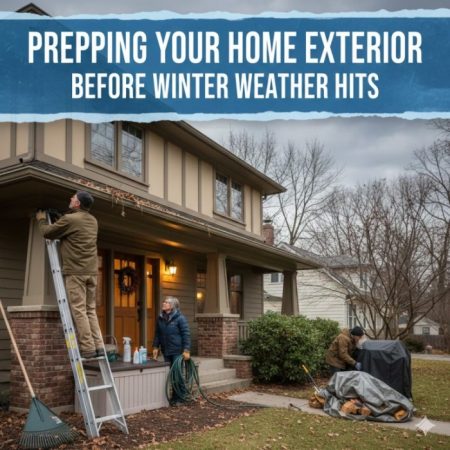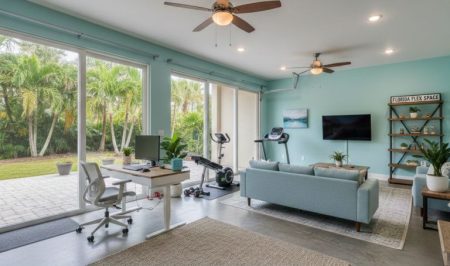Few things put you in the holiday spirit like that which is created in a home that is beautifully decorated for the season. But for homeowners who have steep roof lines or dormers, what was to be a fun festive activity turns very quickly into a frustrating task. Dormers add character and architectural interest to a home but also present a place where it is easy to damage paint, shingles, or siding if lights are not put up properly. The good news is that with care in your planning or by hiring professional Christmas light installation services, you can achieve a great-looking symmetrical display without at all damaging your home’s exterior.
Understanding Dormer Window Challenges
Dormer windows project from the primary roof, which in turn forms vertical walls and unique eaves. This design element gives depth and dimension but also brings in many elements that must be paid attention to while decorating. As opposed to flat roof edges or gutters, dormers usually have decorated wood trim, decorative moldings, or shingles, which should not be damaged or put under stress.
Avoid all methods of installation that puncture the surface.
Step 1: Plan Your Design Before You Climb
Before you go up the ladder, do a design sketch and measure each dormer window out. A little planning goes a long way to prevent waste of effort later. Note the width and height of the dormer, the distance between them, and how the lights will tie into your main roofline.
A balanced outline is the base for a professional look. You may choose to trace the edge of each dormer (roofline and window frame) or go with just the top edges for a more discrete look. For a classic and elegant touch, go with warm white LED mini lights; for a more fun and modern look, multicolor C9 bulbs are your best option.
If you are not sure about the color, brightness, or angle issues, professionals have found that professionals use software and digital mockups for previews, which in turn see to it that every dormer fits in with the roofline and other architectural features.
Step 2: Choose the Right Light Clips
Clips are the key to safe light installation. What you use is important for securing wires and at the same time protective of fragile surfaces. Steer clear of metal fasteners or adhesives, which will damage paint. Instead, go for the purpose-made plastic clips.
Here is what professionals have of the best clip types for dormer windows:
- Shingle tabs: Slide in under roof shingles and put C7 or C9 bulbs upright. For roof edges.
- Gutter clips: Snap into the gutters easily without force or damage.
- All-in-one clips: These flexible clips can fit on gutters, shingles, or drip edges, great for mixed roof styles.
- Siding clips: Great for dormer window sides that have a vertical angle, which may not have access for drill bits.
- Command™ outdoor light clips: Adhesive type and weather resistant for smooth trim or vinyl siding.
A good rule of thumb: Match your clip to the light bulb type and the surface material. For C9 bulbs in particular, professionals use sturdier clips, which also support their greater weight.
Step 3: Maintain Even Spacing and Angles
Proper spacing is what makes or breaks your display. The human eye notices uneven lights, which is very easy along features like sharp rooflines, which we see as dormers. For a uniform look, which is so important in lighting space, space your lights at 6 to 12 inches apart, which is also going to depend on the size of your bulb.
When drawing out dormer peaks, go with the roof’s natural angle. Placement of the clip should follow the slope so that the direction of the bulbs is the same. If dormers are of different heights or pitches, adjust the spacing a little bit to achieve balance from ground level.
Professionals use chalk lines and laser levels for marking clip positions, which in turn gives a symmetrical look to the dormers, and also professionals avoid crooked runs, which are a result of complex roof angles.
Step 4: Secure Cords and Connections Safely
Once you put in the lights, it’s time to work the wiring out. Use non-damaging clips or plastic cable ties to secure extension cords to the roof. Also do not run the cords across the shingles or put them in valleys where water will collect.
All outdoor lights and light strings should be designed for exterior use and put into GFCI (Ground Fault Circuit Interrupter) outlets. As for roofs that are steep or have second-story dormers, pros use weatherproof connectors and timers, which in turn will turn the lights on and off at set times, thus reducing the need for daily ladder use.
If for your home’s design you will use many extension cords, label each of them so you can easily put them away at the end.
Step 5: Prioritize Safety—Especially on Steep Rooflines
Dormer windows are found mostly in the upper levels and on steep roof sections, which at times present a risk for installers. Use a stable extendable ladder that is placed on a flat surface. To access hard-to-reach peaks or odd-shaped dormer sides, use a roof harness or safety rope.
Also, it is best for homeowners who have complex roof lines to leave Christmas light installation to professionals. Professionals have that, using commercial-grade tools, stable ladders, and harnesses to ensure safety and precision. Also, they are able to do digital light mapping, check for waterproof connections, and secure clips that do not damage your home’s trim.
Step 6: Removing Lights Without Damage
After the holidays, take your time to remove the lights, as you may pull off paint or clips if you are too rough. For the clips on the trim, use a gentle lift rather than a pull. Also do not yank the wires. Store the lights wound neatly on reels or in bins, which will in turn prevent tangling and will lengthen their life for the next season.
Check over your trim and siding for wear prior to winter. A touch of protective paint or sealant goes a long way in maintaining your home’s curb appeal all year round.
Final Thoughts
Painting out your dormers with Christmas lights requires patience and precision, but the payoff is worth it. Your home becomes a festive display with the right balance of twinkles and symmetry. Use the proper clips, space your lights out just so, and take the safety precautions to achieve a pro result, which at the same time brings out your home’s architecture without doing damage to the trim.






